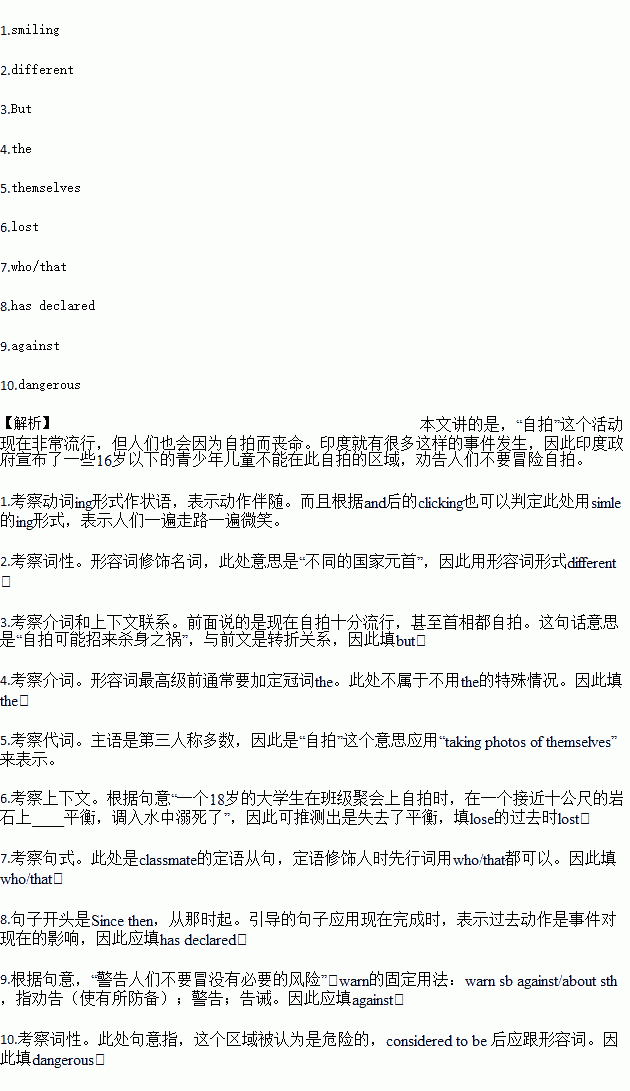题目内容
In any major Indian city, people are seen with an arm outstretched, mobile phone in hand,1.(smile) widely and clicking away. Even Prime Minister Narendra Modi has embraced the selfie (自拍), posting pictures online that he’s snapped with2.(difference) world leaders.
3.the act of selfie can sometimes have deadly consequences. India is home to4.highest number of people who have died while taking photos of5.,with 19 of the world’s 49 recorded selfie-linked deaths since 2014.
Earlier this month, an 18-year-old college student on a class picnic 6.his balance while taking a selfie on top of a rock near a dam. He fell into the water and drowned, along with a classmate7.jumped in to save him.
Since then, the Indian government8.(declare) 16 no-selfie zones across Mumbai, warning people9.taking unnecessary risks. Police have declared “no selfie” in areas considered to be10. (danger)—particularly along the coastline in spots with no railings or fences. Anyone venturing into “no selfie” areas, even if they take no photos, will risk a fine of 1,200 rupees ($ 17.50).


 nge. Change happens in every area in our lives, such as moving into a new apartment or home and changes in career or business. So we cannot avoid change in life. 1. Here are some of the benefits of change:
nge. Change happens in every area in our lives, such as moving into a new apartment or home and changes in career or business. So we cannot avoid change in life. 1. Here are some of the benefits of change: